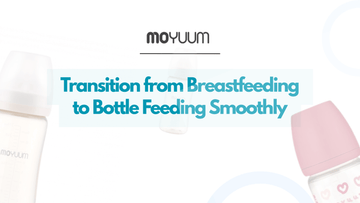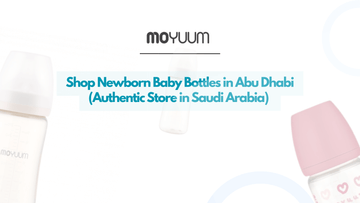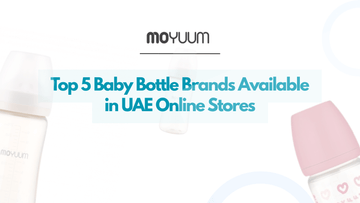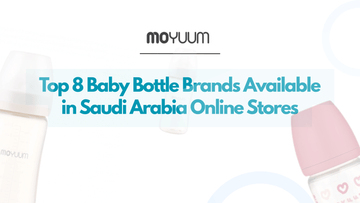Breastfeeding is more than a feeding method, it’s a bond, a rhythm, a quiet moment shared between mother and baby. That’s why the decision to transition to bottle feeding can feel so personal and, at times, overwhelming.
Whether you’re preparing to return to work, navigating supply concerns, or simply ready to share feeding responsibilities, this shift is a major step in your motherhood journey.
The good news? With gentle pacing, emotional readiness, and the right baby care tools, you can make this transition smooth and comforting, for both you and your little one.
When Is the Right Time to Start Transitioning?
The ideal time to begin bottle feeding depends on your baby’s development and your lifestyle needs. Many parents start introducing the bottle between 6 to 12 weeks, once breastfeeding is well-established.
If your baby is feeding effectively at the breast and gaining weight consistently, this window is a great time to start. Avoid transitioning during teething, illness, or sleep regressions, as these can lead to resistance or discomfort. Watch for readiness cues: your baby may seem curious about bottles or settle well when fed by another caregiver.
Step 1: Introduce the Bottle Gradually
A slow, gentle approach prevents confusion and resistance. Start by offering a bottle once a day when your baby is relaxed, not too hungry or too full. Mid-morning feeds usually work best. Use expressed breast milk in the beginning to keep the taste familiar and ease the transition.
For this step, Moyuum’s Anti-Colic PPSU Baby Bottle is an excellent choice. Its soft silicone nipple and anti-backflow valve system help mimic the natural breastfeeding experience, reducing rejection and fussiness.
Have someone other than the mother offer the bottle initially. Babies often associate mom with breastfeeding and may refuse the bottle if she’s nearby. A different caregiver using soothing tones and gentle motion can ease the baby into accepting this new routine.
Step 2: Choose the Right Bottle and Nipple
Not every bottle suits every baby. Flow rate, nipple shape, and material all play a role in bottle acceptance. A slow-flow nipple prevents overwhelming your baby and allows them to feed at a natural pace. Moyuum bottles come with ultra-soft silicone nipples in various flow levels, making them ideal for newborns and older babies alike. Their BPA-free PPSU construction ensures safety and durability, especially if you're planning long-term mixed feeding.
Try different nipple shapes if the first option is rejected. Moyuum offers replacement nipples in both round and orthodontic styles, helping you find the right fit for your baby’s latch and suckling pattern.
Step 3: Replace One Feeding at a Time
Once your baby starts accepting the bottle, begin to replace one breastfeeding session every few days. Start with the least emotionally significant feed, often the midday feed, and save bedtime feedings for last. This slow tapering gives your body time to adjust milk supply naturally, reducing the risk of engorgement or clogged ducts.
Continue using expressed milk in bottles for a few days before switching to formula, if that’s your plan. If supplementing with formula, use a gentle, baby-safe sterilizer to keep bottles clean. Moyuum’s UV Sterilizer and Dryer is a reliable option for busy parents who want safe, mess-free cleaning.
Step 4: Create a Calm Feeding Environment
Bottle feeding doesn’t mean sacrificing intimacy. Hold your baby close, maintain eye contact, and use skin-to-skin contact to mimic the bonding of breastfeeding. Choose a quiet space free of distractions. Consistency in your feeding routine helps your baby associate the bottle with comfort and security.
Moyuum’s Premium Feeding Pillow supports proper posture for both baby and parent, reducing strain and helping maintain closeness during feeds. Use it consistently to create a familiar, comforting feeding setup.
What to Do If Your Baby Refuses the Bottle
Bottle refusal is common, especially in babies exclusively breastfed for several weeks. If your baby pushes the bottle away, try warming the nipple under running water to mimic body temperature. Switch caregivers, positions, or even try feeding during a walk or light rocking. Persistence and calmness are key, your baby will gradually adjust.
Try introducing the bottle when your baby is slightly hungry but not frantic. If your baby continues to resist, switching to a different nipple style or bottle brand may help. Moyuum’s Wide Neck PPSU Bottle with its ergonomic design is a great alternative if your baby seems uncomfortable with the standard shape.
How to Handle Emotional Challenges During the Transition
Transitioning away from breastfeeding can bring unexpected emotions. Some mothers feel guilt, sadness, or even grief. These feelings are valid. What matters most is that your baby is well-fed, safe, and loved. Bottle feeding can still be a nurturing, emotionally connected experience.
Don’t hesitate to talk to other parents or a lactation consultant if you need guidance. Journaling your experience, celebrating small wins, and practicing self-care will help you feel more grounded during this change.
Mixed Feeding: Is It a Long-Term Option?
You don’t have to choose one method exclusively. Many parents maintain a mixed feeding routine for weeks or even months. You might breastfeed in the morning and evening, and offer bottles during the day. To sustain milk production, continue pumping regularly and use a high-quality breast pump, Moyuum’s Double Electric Breast Pump offers quiet operation, adjustable suction, and compact portability, ideal for working moms.
Store milk in Moyuum’s Leak-Proof Milk Storage Bags, which are pre-sterilized and safe for freezing. This ensures you have breast milk ready when needed, keeping flexibility in your routine.
Signs That the Transition Is Going Well
A smooth transition doesn’t mean your baby loves the bottle on day one. Progress looks like steady weight gain, improved comfort with bottle feeds, and calm feeding sessions. Look for signs like longer sleep intervals, consistent diaper output, and increasing interest in bottle feeds. Each of these suggests that your baby is adapting successfully.
Conclusion: Keep It Flexible, Keep It Gentle
There’s no single right way to make this transition. Some babies take to the bottle easily; others need time and patience. Your feeding journey is unique, and success doesn’t mean perfection, it means meeting your baby’s needs while respecting your own well-being.
Use tools and products that support this process, like Moyuum’s anti-colic bottles, feeding accessories, and nursing aids, all designed to help parents navigate early development with confidence.
With the right mindset and support, transitioning from breastfeeding to bottle feeding can be a positive, empowering chapter for your family.
Looking for more baby essentials? Don’t miss our full range of feeding and care products including RealFit Nipples, baby pacifiers, teethers, straw cups, suction plates, suction bowls, and brush sets—all designed with your baby's safety and comfort in mind.





